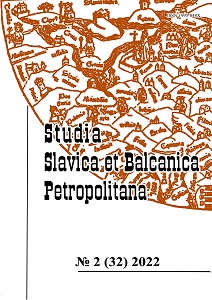Святые, приплывшие из-за моря: «Немецкая» модель юродства в средневековой Руси
Saints who sailed from the sea: «German» model of foolishness in Old Russia
Author(s): Liudmila Borisovna SukinaSubject(s): Christian Theology and Religion, Eastern Orthodoxy, Sociology of Religion
Published by: Издательство Исторического факультета СПбГУ
Keywords: Old Russia; history of holiness; hagiography; foolishness; holy fools-foreigners;
Summary/Abstract: The article attempts to put forward and substantiate a hypothesis about the use of a special model of this feat in the formation of the cult of some holy fools of the Russian Church, borrowed not from the eastern, but from the western medieval religious culture. Some lives of Russian holy fools noticeably fall out of the Eastern Christian tradition, with which old and modern historiography links their hagiography. Despite the veneration of the Byzantine σαλος in Ancient Russia, in its religious life the practices of foolishness occupied a marginal position for a long time. In the process of formation and development of the «national» cult of holy fools in the Muscovite state, one of the options for explaining where such ascetics came from was their foreign origin. In the article this problem is considered on the material of the hagiography of Isidor of Rostov and Procopius of Ustyug. In their Lives, one can single out a topic that is common to them and unusual for Russian hagiography. Both saints are repeatedly referred to in the texts of their Lives as foreigners who previously lived in Western countries, «German land». Both found in the Orthodox faith their «spiritual fatherland» and abandoned the «Latinism». In the Lives of each of them, «foolishness» is explicated as the main religious practice. But this is not the «obscenity» of the Eastern Christian σαλος, but a desire for solitude and wandering close to the model of behavior of the saints of the Western Middle Ages. In both lives there is a motif of the sea. Based on the observations and arguments presented in the article, it can be assumed that the compilers of the hagiographies, creating the image of a holy fool-foreigner unknown to Old Russian literature before, were guided by hagiographic texts not only of Greek-Byzantine, but also of Western European origin, some of which were available in Slavic translations. The saturation of the texts with Novgorod plot details indicates that Novgorod, which had long-standing and extensive cultural ties both with the post-Byzantine world and with the countries of the Baltic region, could be the place for constructing this new model of holiness for Old Russia.
Journal: Петербургские славянские и балканские исследования
- Issue Year: 2023
- Issue No: 1 (33)
- Page Range: 3-16
- Page Count: 14
- Language: Russian

